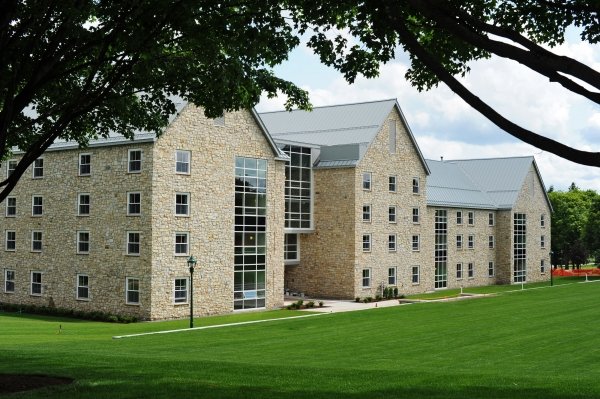The Evolution of Campus Isolation Across the Years
Students entered campus last year in a frenzy of confusion and curiosity about how the year would function with the rising pandemic. The number of cases increased daily, leaving the students of St. Lawrence in a constant state of concern. Starting the year in the green zone lasted approximately eight days until the first the first “COVID-19 Campus Update” arrived in every SLU student’s email. This email came on Aug. 30, 2021, and advised the students that the status had been moved to yellow and that there were a whopping 18 cases on campus. By Sept. 6, one week later, that number was 137.
A campus update was sent every day for about two weeks, until the cases stopped going up significantly. The first semester remained rather strict, but as the booster rolled out and cases stopped spiking, the restrictions slowly went away. Students were almost fully maskless by graduation, which was celebrated thoroughly.
This year has proved different for the students of SLU. To compare, senior student Taylor-Ann Scheening gives her insight, saying that “students are finally feeling at home again.” She, along with many other students, is heartened to find that there are more student activities that people feel comfortable attending. When asked how the environment of campus culture compared to last year, she said she thinks there is a “shared sentiment on campus that we actually feel like we are at college now and feel welcomed here instead of feeling like we are being punished for going to school in the past years.”
It seems that the only aspect of campus that remains reminiscent of the pandemic is the quarantines. The only campus update that has been sent out this year is one that outlines the quarantine options for students who contract the virus. The quarantine conditions of last year and this year have been a hot topic among students, as people seem to have had negative experiences.
Quarantine in the 2021-2022 school year during the first semester, if you lived within a 500-mile radius, students would get sent home unless they could not be due to extenuating circumstances. This caused trouble and inconvenience for a lot of students and their families. In the second semester, it was most commonly a five-day isolation cycle, most likely in an off-campus house. This option was not surprisingly unpopular among the student body. Students were constantly complaining about the quality of their quarantine experience.
One student was fairly upset over her quarantine experience from last January. Lane Haehl ‘23 described her experience, starting with how she was provided to help or support getting to her house or settling herself into her room. She described everyone as very neglectful, and the conditions of her room were very bad until she complained enough that she was moved and given better care.
Kris Jutras ‘23 seemed to have a better experience than her peer, stating that she was “a big fan of the house,” and that the rules that got emailed to her were not heavily enforced. Jutras followed the same five-day cycle and came out on the other side with an overall positive experience, except for the difficulty getting work done.
About this year, the two students agree that there is a more relaxed approach to the pandemic. In reference to kids getting sick, Haehl stated that “realistically, kids aren’t going to test since isolation is so unenjoyable, which affects the whole population.” This is a sentiment that is shared by many SLU inhabitants as we can see students urging their peers to get tested over various social media platforms. As for the protocols this semester, Jutras feels “like an adult rather a preschooler which is how they were making us feel like last year.” She states that “there’s definitely a lot more personal responsibility this year,” and that this year is “less structured, but it’s more like a real-world experience as opposed to a college experience.”
This year, student quarantine feels a lot different. There are now on campus quarantine options, and recently it is now acceptable to quarantine with your roommate in your residence hall if following the proper protocols. As for the designated quarantine areas on campus, there have not been many amazing reviews.
Milo Coolman ‘23 reflected on the gloomy duration of his five-day isolation. “I don’t think I saw another human face during my time there,” he said. He explained how he was only in his room with the only exception of going to the bathroom. Coolman finished off by saying that after quarantine, he had to wear a mask for five days, then he was fine. When asked about his overall experience, his only response was “try not to get Covid-19, because being in isolation sucks.”
Another student who was in isolation around the same time had similar feelings. Kate Gardner ‘23 said, “Overall, it was fine.” Her biggest complaint was about the food, or lack thereof. She said that they served “only one real meal a day, then a salad and expected that to hold us over.” She described having to have friends bring her pub food to the door of the isolation hall, which puts more students at risk. She also stated that only one of her professors made an effort to accommodate the quarantine, and that she had to return to the next week having missed an entire week of school, through no fault of her own.
Overall, it is clear to see that there are some major improvements that should be made to the quarantine system. Changes were made that are better for students, but it seems like the student body believes there is still room for improvement. Isolation is not something that people are meant to enjoy, but it does not have to be something that people dread.



